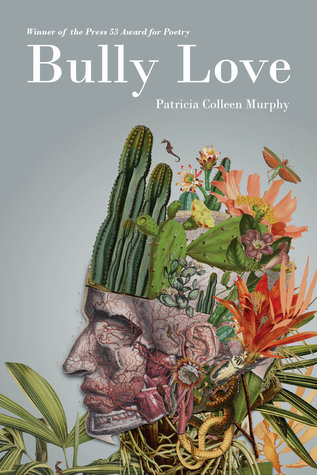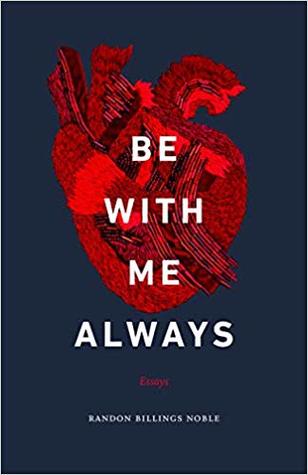This was a big month for reading, which should come as no surprise as I, like a lot of people, have been spending a lot of time at home. Here’s the month’s lineup of books finished:

I’m From Nowhere by Lindsay Lerman is a short novel about grief that takes place against a backdrop of intense global warming. Food production has been severely impacted by the heat crisis and fresh produce is now a luxury. Otherwise, people survive on canned food only. In the new environment, what does the future hold? Does it make sense to even raise children now? And what is climate change doing to our own prospects? At the beginning of the book, Claire has just learned that her husband, John, has died and the funeral is now happening. They were a young couple, and they had been arguing about whether to have a baby. She wanted one—because her life without a job was feeling empty—and he wasn’t sure they should. Two old friends of John’s, Luke and Andrew, have come to the funeral, and Claire has a complicated relationship with both of them. The book, lyrical and slow-paced, shows her dealing with her grief and also deciding whether and how she might continue.

Bully Love by Patricia Colleen Murphy is a poetry collection from Press 53. The poet, originally from Ohio, now lives in the Southwest and her poetry often addresses that transition—marveling at the desert landscape in which she now lives while also remembering her home fondly. The collection also includes many poems about the poet’s mother who apparently suffered from mental illness. These are touching poems that also suggest a certain amount of anger. The poems overall are filled with beautiful images and brave emotions.

Gun Island by Amitav Ghosh is about a rare book dealer and folklorist who splits his time between Brooklyn and Calcutta, India. On a visit to India, he learns of a shrine in the Sundarbans, islands off the coast of West Bengal. The shrine, he is told, is connected to a folktale with which he is familiar, about a figure called the Gun Merchant and the Hindu goddess of snakes, Manasa Devi. A young man who accompanies the book dealer to the shrine is bitten by a king cobra, which seems to trigger psychic abilities. Later, through an Italian acquaintance, the dealer makes a connection between Venice and the shrine, so he travels to Venice to investigate further. All of this is told against a background of bizarre weather patterns brought on by global climate change and also the linked issue of migration, as the book dealer becomes involved in a crisis concerning immigrants in Italy, including Bengalis. The book was extremely engaging, but I noted that there are large passages of “information dumps,” basically spots where one character tells another character a story that is intended to provide information to the reader, as well as the main character. It’s essentially how he learns about the issues that are at the heart of the book. In addition, a great deal of the plot depends on coincidences, occurrences that the rational mind would say are unlikely, although the narrator seems to understand this and begins to believe that there are no such things as coincidences—it’s all about fate. Okay, maybe. In any case, I enjoyed the book and will look for more work by this acclaimed writer.

Last of her Name By Mimi Lok is a collection of stories and a novella about the Chinese diaspora, but mostly about Chinese in Hong Kong and London. Because of the London connection, it reminded me slightly of my reading of Crazy Rich Asians, which begins in London but is set primarily in Singapore and, to a lesser extent, Hong Kong. But Lok’s stories aren’t about the sensationally rich and unreal characters of Kevin Kwan’s novel. These people feel far more real, living real and gritty lives. The collection’s novella, “The Woman in the Closet,” is fantastic and very moving. Granny Ng feels unwanted in her son’s cramped apartment, so she moves to a tent village of homeless people. Eventually, though, she breaks into a comfortable home and secretly lives in the owner’s large storage closet.

The Lost Book of Adana Moreau by Michael Zapata is an interesting puzzle of a novel. Along with Mimi Lok (see Last of Her Name, above), Zapata and I were scheduled to be on a panel at the Virginia Festival of the Book called “Stories of Displacement: Fiction, Far from Home.” The panel, along with the rest of the festival, was canceled, but I wanted to read my co-panelists’ books anyway. Several strands of narrative come together in the book as a young man named Saul, who works at a hotel in Chicago, attempts to fulfil the request of his late grandfather (who raised him after the death in a terrorist attack in Israel killed Saul’s parents) by sending a package to someone named Maxwell Moreau in Santiago, Chile. In a separate strand, Maxwell, born in 1920 to a pirate and a refugee, is searching for his father and carries with him a book written by his mother, a science fiction story about parallel worlds. Arriving in Chicago to search, Maxwell is befriended by young Saul (grandfather to the other Saul), who later becomes a historian and writer. Saul’s family also has a refugee story, having fled Lithuania during the Bolshevik revolution. The modern Saul also has a friend, Javier, a foreign correspondent, who resurfaces after years abroad and together they try to find Maxwell to deliver the package. It’s quite an engaging tale, although so much of the information in the story is one character telling a long story to another character. This feels like it might be the point, although the result is a lot of “telling” that is sometimes distracting (although always interesting).

Killers of the Flower Moon by David Grann is this month’s selection for my book club. When oil was discovered in Oklahoma, it made a lot of the members of the Osage Indian tribe very wealthy. And at some point in the early 1920s, a number of these wealthy Osage turned up dead. The book is about how the local authorities couldn’t or wouldn’t solve the crimes, so the newly reorganized Federal Bureau of Investigation under Herbert Hoover stepped in, appointed a new regional director, and insisted on results. The narrative is fascinating on several counts, including the investigation itself as well as the background of both the victims and the killers. In the last section of the book, after describing how the case was solved by the FBI, the writer emerges and describes more of his meetings with the relatives of other victims and discovered that there was more to the case than the FBI saw.

Be with me Always by Randon Billings Noble is a collection of essays that I picked up after the author and I were on a panel together at the Fall for the Book Festival at George Mason University in 2019. We were on this panel because of some vague supernatural events in our books (as well as the third book) and by the theme of “hauntings,” which one could probably say of any book that deals with memory, and it seems that most books do in one way or another. Anyway, I enjoyed these very disparate essays, some very personal and others that were more externally focused, some that were straightforward and traditional and others more experimental and fragmented.

Disparates by Patrick Madden is another essay collection and these essays are so disparate they provide the title for the book. (Madden is mentioned in the acknowledgments for Noble’s book, and I can see some similarities in their work, but I don’t know what the connection is.) One thing I note about the book is the frequency of musical references, to rock bands I don’t know much about. Some of them I’ve heard of, some I haven’t. And there are references to South American performers, too, as Madden has ties there (his wife is from Uruguay and I gather that Madden did his Mormon mission there). Which is fine, as it gave me exposure to new things (but the book should maybe come with a soundtrack). Besides the musical references, though, there are plenty of other allusions to the greater world, especially to literature, that I appreciated more, including to writers at the opposite ends of the art of the essay: Michel de Montaigne and Michael Martone. (I’m only surprised that Madden didn’t make something out of those MM initials.)

Cargill Falls by William Lychack is a short, intense novel about boys growing up together in a small Connecticut town, told in the form of a reflection on a single day. On their way home from school that day, the boys find a gun, a service revolver, and from then on the reader is filled with dread because something is going to happen involving that gun. It just has to. It’s a quiet book, but its beauty is in the language—filled with careful, evocative imagery.

Murder in the Marais by Cara Black is the first book in Black’s Aimee Leduc Investigations series. I almost never read mysteries, but I had been scheduled to meet the author at a reception at this year’s Virginia Festival of the Book, so I thought I should read one of her novels. The Festival didn’t happen and neither did the reception, but I wanted a light read (some of the other books I’m reading right now are pretty intense), and the idea of a book set in Paris appealed to me. One reason I don’t read many mysteries is that they tend to be filled with clichés and the writing is often mundane, if not downright bad. I wouldn’t say the writing here is bad, but it’s definitely not special. Leduc is an investigator who specializes in corporate crimes (having fled the rougher side of the business when her father was murdered), but takes on a murder investigation when she discovers a body that appears to have been killed by Neo-Nazi skinheads. The deceased is an old woman who grew up without her family, victims of the Nazi occupation of France, and the investigation dredges up some ugly history, not to mention the darker side of modern right-wing politicians.

